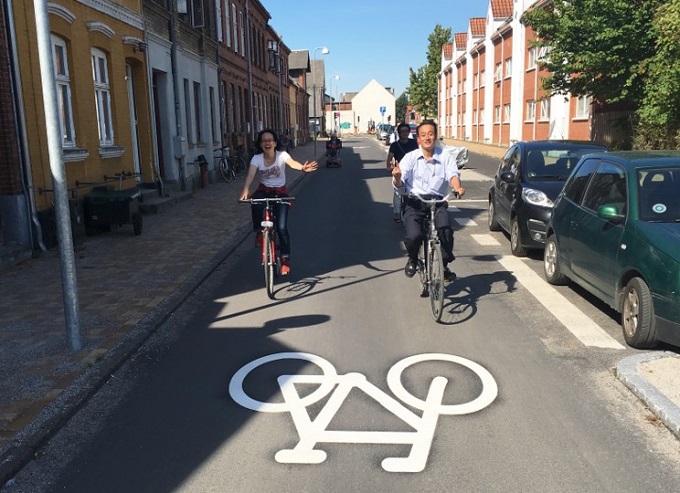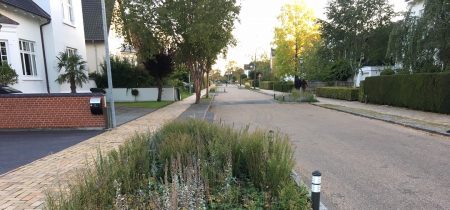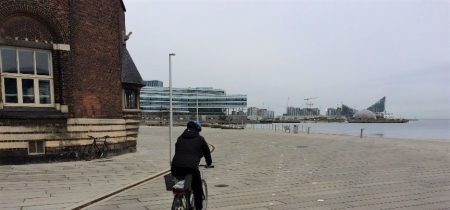Bicycle streets
Bicycle streets are a new type of street organization where cyclists have priority. They have been introduced in several cities and the results are promising, but there have to be many cyclists and very little motor traffic to achieve the proper balance between road users.
By Troels Andersen
Bicycle streets turn everything upside down. Cars are the guests on a street designed for cyclists. The principle has been known in Holland, Germany, Belgium and elsewhere for a number of years, but bicycle streets were not allowed in Denmark until 2016. The first Danish bicycle street was Mejlgade, Aarhus in 2012, and since then bicycle streets have been established in several cities, including Næstved, Vejle, Esbjerg, and Odense.
On a bicycle street cyclists have priority and cars must yield to cyclists. In practice this often means that cyclists ride in the full width of the road, with plenty of space to cycle beside each other or cycle fast.

- Posters were put up when the bicycle street opened since nobody had any idea of the rules for a bicycle street. Photo Troels Andersen
Bicycle street rules
Bicycle streets are now an official category in Denmark, based on the following principles:
- The traffic lane is reserved for bicycles and small mopeds.
- Other vehicles may be allowed in the area if there is a vehicle allowed sign. A time limit may be imposed.
- Driving in the traffic lane may not exceed the equivalent cycling or moped speed, normally under 30 km/h.
- All road users should be extremely alert and considerate of each other.
- Road users may not get in the way of other road users unnecessarily.
- Parking in a bicycle street may only take place in specially marked areas.
Very few drivers (or cyclists) are aware of the rules, and it may be necessary to initiate an educational campaign when opening a new bicycle street. Road posters are excellent, and communication via the social media can reach a wide range of target groups.
In Odense oversized bicycle symbols to emphasize that cyclists have priority have had an excellent effect.

- Bicycle streets have become very popular in Odense. This one is one-way with a contra-flow bicycle track. Photo Troels Andersen
Super Cycle Street in Odense
The bicycle street on Rødegårdsvej is a great success:
- 74% more cyclists over three years.
- Four times as many cyclists as drivers.
- 90% of cyclists feel secure when cycling on the bicycle street.
- 79% of cyclists in the bicycle street find the concept logical.
- The majority of cyclists are satisfied using the bicycle street.
Bicycle streets are here to stay, in Odense too.
Here’s how a bicycle street works: Video: https://www.youtube.com/watch?v=mAABxIqDPDc
Sources
Cykelgader – nu også i Danmark!, Pablo Celis, Trafik & Veje, juni/juli 2012
Cykelgade i Odense – evaluering, Troels Andersen, Trafik & Veje, maj 2017








